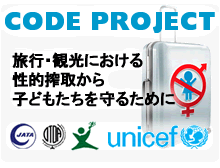Japanese police opened investigations into a record 3,097 child pornography cases in 2018, up 28.3 percent from a year earlier, an official report showed Thursday
March 15, 2019, TOKYO (Kyodo) — The number surpassed 3,000 for the first time and involved 2,315 alleged perpetrators, also an all-time high, up 35.9 percent from the previous year and the fifth consecutive yearly increase, according to the report released by the National Police Agency.
Many of the victims were coerced or tricked into sending nude selfies, the agency said. Cases in which a person possessed images of naked children surged fivefold to 951, while the production of child pornography by taking photos accounted for nearly half of the total at 1,417 cases, marginally higher than the year before.
The distribution of illegal photos by pedophiles and others stood at 729 cases, down 8.6 percent.
Nearly 80 percent of victims were junior high school or high school students. Among them, 1,152 girls and 124 boys were identified through methods including image analysis.
Of the total, 541 children were coerced into sending nude selfies, while 295 involved photographing or filming with hidden cameras.
About 90 percent of cases involving the sending of selfie nude shots involved junior high school or high school students. The taking of photos and videos with concealed cameras accounted for more than half of the cases involving children in elementary school or younger.
The National Police Agency has been stepping up its efforts to crack down on crimes by pedophiles. It confiscated a list of about 7,000 individuals who purchased child porn DVDs in 2017. Since then, police officers across the country have been expanding investigations based on the list.
In 2018, 1,811 were found to have fallen prey to sexual and other crimes through social networking platforms, according to the agency. The figure was almost unchanged from the previous year in which a record 1,813 were victimized.
By age, 991 were high school students, followed by 624 junior high school students.
The social networking platform in which most victims were targeted was Twitter at 718, while 214 used “Himabu,” a popular messaging app for students.


